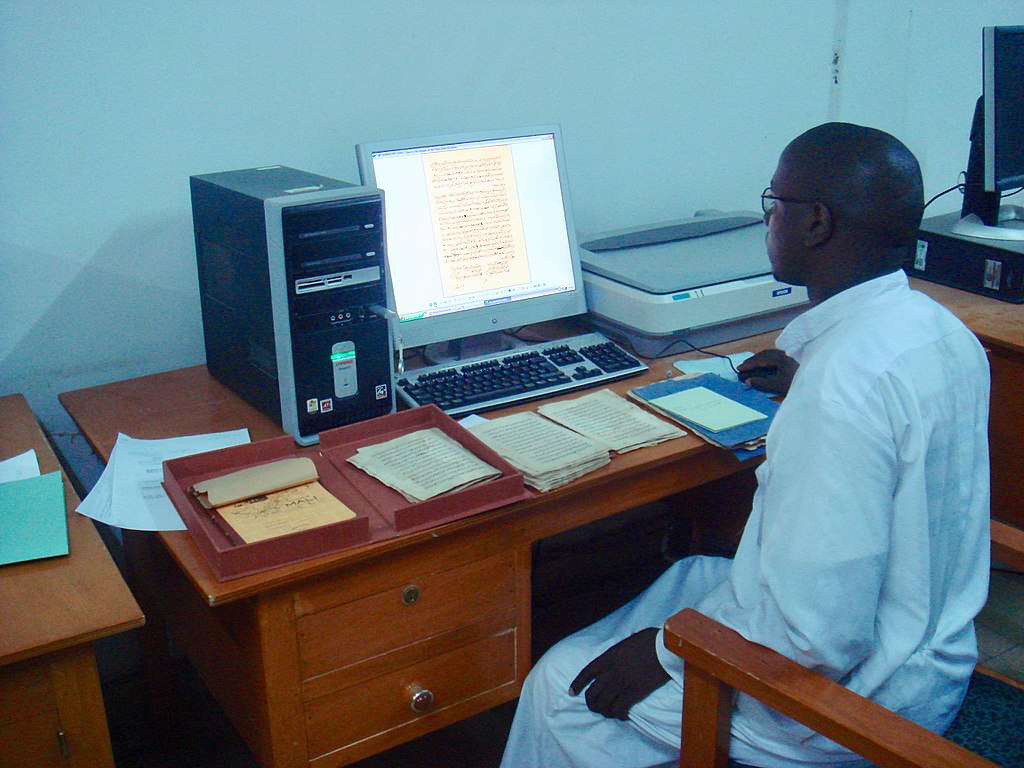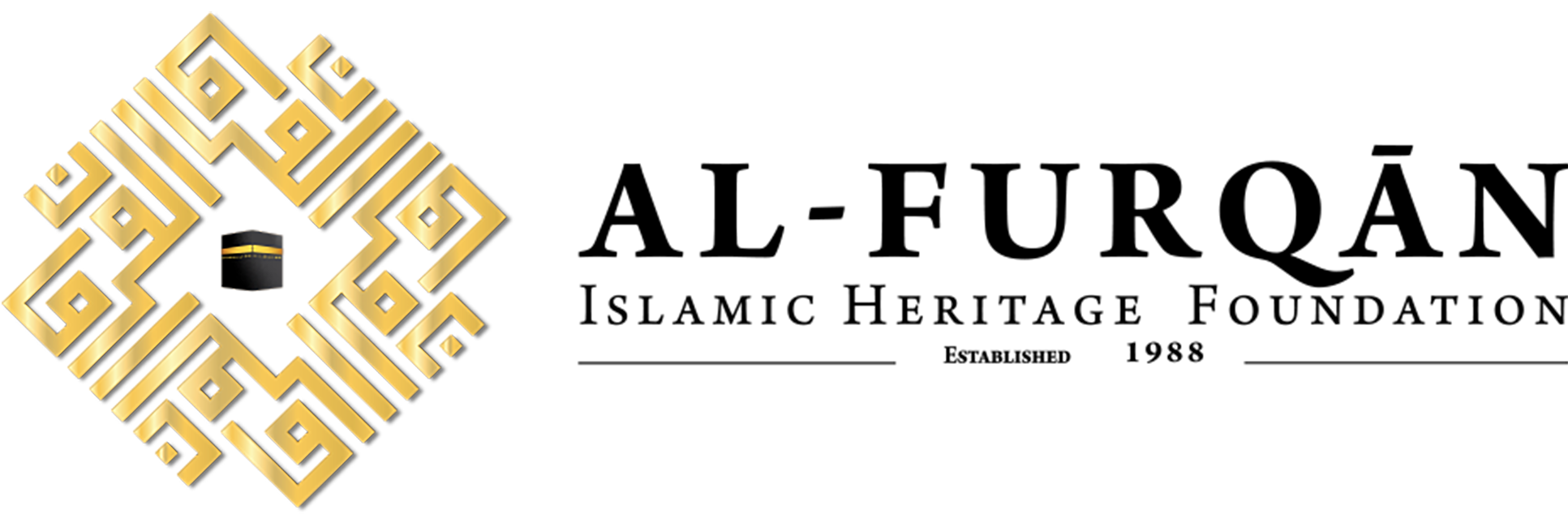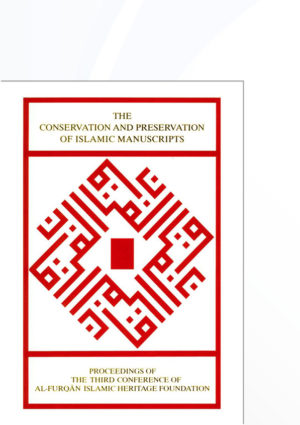The Usefulness of an International Database
Werner Schwartz

Looking at the poor state of some manuscripts, or even of whole manuscript collections anybody will think of preservation. Naturally, this means preserving the manuscripts themselves. Indeed, urgent action is required to guard against the irreversible loss of millions of manuscripts.1
Much effort is and has been made to preserve manuscripts by restoration. It is obvious that private owners as well as persons responsible for public collections often favour immediate action. Visible results that can be reached within a short time, however, have side effects of which those responsible are mostly unaware and which, in most cases, will remain hidden for some time.
To illustrate this we may look at:
1. A private owner's manuscript that has been used for generations. Not knowing better, the owner applied adhesive band to repair it where the damage was worst. It did not take long before those strips of adhesive band turned brown. The synthetic glue penetrating the paper will soon render the script almost illegible.
Let us turn to a public collection:
2. A parchment manuscript, although generally in good condition, was torn on the edges. A bookbinder treated the parchment as he would ordinary books. Now, strips of paper glued to the edges of every leaf prevent the parchment from moving naturally. Instead of expanding and contracting in constant reaction to every change of humidity and temperature, the parchment is now forced to form folds which rub against the folds of neighbouring leaves. Eventually this will result in the loss of part of the ink and colour.
3. Most terrifying is my last example of a spoiled manuscript. To protect it against any future harm that could be caused by reading and other handling, the library's administration followed the advice of a conservation expert. At the time, this expert was convinced, as many others, that lamination was the best method for preservation. Plastic sheets glued to both sides of every leaf have had their effect since. Turned brown and brittle, they have spoiled the manuscript they were meant to protect. Two decades after fly treatment, we say that this valuable piece is now lost.
I am not saying that restoring or conserving manuscripts is equal to spoiling them. Cautious restoration, which builds upon the physical substance of the original materials contained in the manuscript, is producing admirable results. Diligent restoration is slow and mostly unspectacular. Those responsible for manuscript collections may feel tempted at times to look for fast and visible results. Preservation of the original manuscript cannot be forced by hurried action. On the contrary, in many cases it is better not to treat manuscripts at all thin to rush to apply modern methods without proper reflection. The three examples I presented should be taken as a warning against such well intended but misguided measures.
In view of the bad state of a large portion of the world's Islamic manuscripts, urgent action is required. Though a lot is being done already, it remains true that most collections do not invest anything for preservation. They lack funds. It is Well known how much funding of staff and material is required, when a library embarks on a systematic programme to preserve its own manuscripts by restoration. It is not enough to run a preservation project for a few years. Instead continuous work without a definite time limit is required. Obviously, such a programme of preservation will be impossible to realise for smaller and private collections if they are left without outside support.
Meanwhile, degradation and loss of manuscripts continues. The use manuscripts are exposed to in libraries is only the least significant of causes. Negligence of the owner or his selling off to some unqualified customer, theft, water, fire, and destruction in the course of war prove to be faster than all combined efforts to preserve them. It will not be possible to save the entire written heritage of Islam as it exists today.
I am not sure whether any argument similar to this was involved when the Arab League started its microfilming missions to member states in the 1950s. I suppose microfilming here, as in Europe and North America, was done in the first place to improve researchers' access to the works they wanted to study. Beyond this, microfilming is another way to preserve a work.
The work's written information together with some information about the physical characteristics of the original manuscript is recorded in a format different from the original. Modern techniques of digitising may soon offer another option of long term preservation on computer file. To designate various ways of preserving and storing written or printed information in another physical format the term reformatting has been introduced.
Though it is true that any kind of reformatting cannot come anywhere close to what can be achieved by high quality restoration of the original, conversion to another format, in addition to protecting the original from further damage, offers the advantage of improved access to the work by duplication as hard copy, microform, or digital file.
Microfilming has been widely used for more than half a century. Technology for processing and using all types of microforms is well established. Microform masters produced and stored according to internationally agreed standards2 may last over 300 years without any loss of information.
Furthermore, digital reformatting is developing fast and will soon be common in everyday use. If we have technology now for regenerating a digital master to last as long as a microform master, we still have to be sure to have the equipment to read a digital master, which is produced in this century, in 300 years' time.
How are we to choose between preservation by reformatting and preservation of the original item? I believe we have to do both in parallel action, saving as many works as possible from eventual loss by reformatting while running a long-term programme of restoration and Conservation. A manuscript selected for reformatting should be ranked according to its physical condition on the library's list of items that are in need of restoration. On the other hand, a work we select for restoration should in every case be made available in another format as well.
The reliability of microforms in preservation has brought together major European libraries which co-ordinate their preservation activities through the help of the European Register of Microform Masters (EROMM). With the phenomenon of brittle paper, especially, threatening their holdings of handwritten and printed documents, the libraries have long used microfilming. Starting as a service for their users, libraries came to regard microfilming as a good means of preserving large quantities of documents, which otherwise could not all be preserved in original formats.
Co-ordinating activities in preservation microfilming within EROMM is centred on printed books. No less than 80 per cent of the world's literary and scientific publications of the last 150 years are in danger of being lost because of decomposing paper. The threat to library holdings is enormous. At the same time, research in all fields of knowledge depends on the availability of those works. The question is how to save as much of the world's printed heritage as possible.
EROMM serves as a register of all publications that have been or will soon be microfilmed. By checking the EROMM database, libraries can avoid reformatting books that have been reformatted elsewhere already, thereby saving their limited resources for other items. Service copies of any work are made available if requested. Of course, national and international copyright laws have to be respected.
EROMM was set up as a pilot database at the Bibliothèque Nationale, Paris in 1993. To run EROMM as a permanent service, the university library at Göttingen in 1994 took on the functions of hosting the EROMM database and doing the administrative work related to it. When opened to online access from abroad toward the end of that year, the database numbered about 50,000 records. Twelve months later the number of records has multiplied six times, standing at well above 300,000.
Records describing microform masters produced by libraries from nine European countries3 are being continuously sent to the EROMM host. With more libraries joining, we hope to file records of the printed books throughout the continent that have been microfilmed. Europe, however, is not alone. In all parts of the world, reformatting is the daily practice of major libraries. Consequently, EROMM is looking forward to exchanging master records with parallel initiatives elsewhere4.
A record in the EROMM database consists of two parts.
Part 1 gives the bibliographical description of the work, following the cataloguing standard of the library which produces the record.
Part 2 is devoted to the microform. It gives:
- place and name of the agency responsible for microfilming and the year, together with place and name of the agency actually producing the master (terms of availability of service copies may be included),
- the number and type of microform with relevant physical description, and
- the institution where the master is kept, with the master's call-number.
A library wanting to reformat its own copy of a given work checks with EROMM whether this work has been microfilmed already. If it finds a record describing the same work, it will refrain from putting its own copy under the camera. Instead, it will direct its resources to filming of another work. In addition, it may order a copy of the microform from the library that produced the microform master.
Producing a master of archival quality is only part of the job, which we may call preservation by reformatting: to preserve information not only for decades but for centuries we need institutions that will manage the care and storage of the master for the same period. Such institutions and their staff must be properly equipped to ensure the survival of reformatted information and access to it.
The EROMM database is beginning to have positive side effects that were hardly visible when the EROMM concept was first proposed. Any library giving its records to EROMM may be approached from time to time by other libraries asking for copies of works it has reformatted. This continuous exchange keeps the library aware of the importance of its holdings and of its responsibility to assure the permanent conservation of the master and the availability of service copies. The library's reliability in fulfilling its role is under the scrutiny of the international library community.
The database as the basis for communication between libraries can therefore reinforce the consciousness of librarians and administrators that their collections are part of a virtual worldwide archive preserving the written heritage of mankind. Experience gained with the European Register of Microform Masters could be a model for similar action to co-ordinate preservation of the Islamic manuscript heritage.
I would like to advance the idea of creating an international database for reformatted Islamic manuscripts. This cannot be a simple copy of EROMM because of the principal difference between manuscripts and printed books. In contrast to a printed publication, a manuscript is unique by definition. Even though other manuscripts may be copies of the same work, every handwritten copy will differ from the other. Every manuscript has to be valued not only for giving a particular variant of the text of a work, but as a source documenting interest and use of the work at certain places and times. There is no need for any lengthy explanation of this well known argument here.
The aims of a computerised Register of Reformatted Islamic Manuscripts (RRIM) are:
1. To serve as the universal short title catalogue of manuscripts which will lead the way to more complete information in local or national catalogues5.
2. To give up-to-date information on:
- the manuscript's physical condition (showing the need for preservation and reformatting),
- the existence of a microform master or a digital master,
- the availability of service copies,
- the owner or library.
3. To offer the basis for systematic research into the literary history of Islam.
4. To provide comprehensive statistical data that can be used in planning major preservation programmes.
Once set up, the RRIM will improve awareness of the added importance of libraries that guarantee the survival of original and reformatted works in their archives. By giving custodians as well as scholars easy access to bibliographical information about the author, the condition and ownership of the manuscript, its format of preservations, and conditions of access, potential danger to a specific collection will not pass unnoticed.
One side effect will be that the illegal sale of a manuscript will be rendered far more difficult than at present. Librarians as well as book and art dealers would check the RRIM database to make sure that the item on offer does not belong to any known collection. This may be no perfect barrier against theft, but in many cases it may prove as useful in detecting illegal action as the Art Loss Register run by James Emson in London.
For proper functioning, the RRIM must be set up as a database accessible from any country. A CDROM edition must be published periodically. A serious disadvantage, however, is that no computer standard for filing bibliographical records in the Arabic and Roman scripts has found broad acceptance yet. For this reason, most of the input into the database has to be made on-line, thereby making the database serve as a cataloguing system as well.
I end my paper by giving a list of requirements that should be examined or agreed upon to ensure the proper functioning of the RRIM:
Administrative
- Select four to five libraries from different countries to work as partners in a pilot project.
- Draw up a time-table for the project phase.
- Select a host for running the database.
- Fund-raising.
- Report publicly on progress being made and keep in touch with future partners. Perhaps allow additional partners to step in during the project phase.
Computing
- Define bibliographic format (UNIMARC?).
- Define character coding (UNICODE?).
- Select appropriate hardware and software for the database itself.
- Make sure that standard protocols are used for data interchange.
- Make sure that standard hardware is used for workstations linking up with the host for retrieval and cataloguing.
Bibliography
- Define cataloguing standards.
- Determine the minimum level of information that must included about the work, its author, the manuscript, its copyist, the owner private or library), etc.
- Determine the best way to ensure adherence to agreed standards.
Many of the same questions had to be dealt with by the four founding members of EROMM. It could be very useful indeed to make use of their experience.
| Bd. 13: | Türkische Handschriften. 1968- |
| Bd. 14: | Persische Handschriften. 1968- |
| Bd. 16: | Illuminierte islamische Handschriften. 1971. |
| Bd. 17: | Arabische Handschriften. 1976- |
| Bd. 24: | Afrikanische Handschriften. 1993- |
| Bd. 30: | Kurdische Handschriften. 1970. |
| Source note: This article was published in the following book: The Conservation and Preservation of Islamic Manuscripts, Proceedings of the third conference of Al-Furqān Islamic Heritage Foundation, 18th-19th November 1995 - English version, 1995, Al-Furqān Islamic Heritage Foundation, London, UK, pp. 175-183. Please note that some of the images used in this online version of this article might not be part of the published version of this article within the respective book. |


